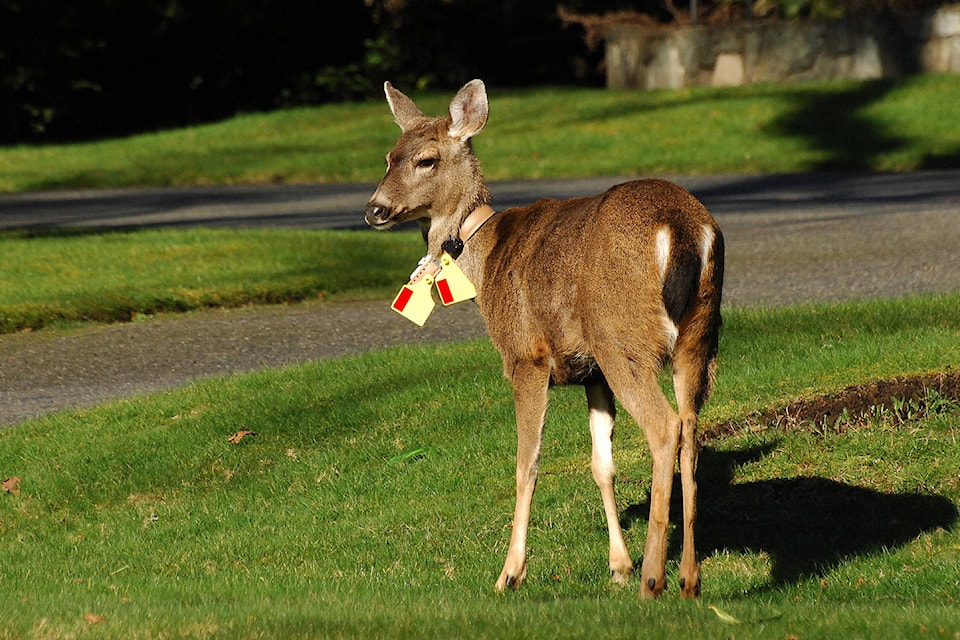With the Urban Wildlife Stewardship Society continuing its urban deer research and contraception program in Oak Bay, Esquimalt will be learning more about its own deer population this fall.
The second of three annual counts is underway in the township, which will allow for an informed approach to deer management, explains the Society’s Kristy Kilpatrick.
Because wildlife populations are unique to their communities, Esquimalt must undertake its own research to have the necessary data for truly effective management, otherwise experts suggest attempts are pointless, she says.
“This will let us understand the population, the movement patterns and trends, so that future management decisions can be informed,” Kilpatrick says, noting that the Oak Bay project will guide Esquimalt on options for non-lethal deer reduction.
As fawning season continues in Esquimalt and around the region, residents are reminded to give protective deer their space.
Often reports of deer acting “aggressively” involve people walking with their dogs, or those waving their arms and yelling at the does. The does see this as threatening behaviour that puts their fawns at risk – even if you can’t see the fawns nearby.
To reduce the chances of interacting with protective deer, Kilpatrick suggests the following steps:
- Avoid eye contact – this can be seen as challenging behaviour.
- Remain quiet – waving your arms and yelling is threatening to the doe, causing the mother to feel even more protective of her fawn
- Cross the street – rather than confronting the deer, cross the road to avoid contact
- Change your route – if a deer appears to be following you, try changing direction. You may unknowingly be walking toward a hidden fawn.
- Keep your dog near you – dogs are natural threats to deer, regardless of their size, age or demeanour. Not only is it important to keep your dog leashed when out walking where deer are in the neighbourhood, but when you see a deer, keep your dog near you as you walk. Never release the leash to let the dog chase the deer away.
- If you see a fawn, leave it alone – does will often leave young fawns for a time, so seeing a fawn without its mother does not mean it is orphaned or has been abandoned. Chances are the doe will return once you have left
While fawning season is waning, fall rutting season is also on the horizon, when bucks can become more visible and their behaviour can be erratic;; similar approaches can help avoid conflicts.
For more information, visit uwss.ca. Learn more about Esquimalt’s deer management initiatives at esquimalt.ca.
